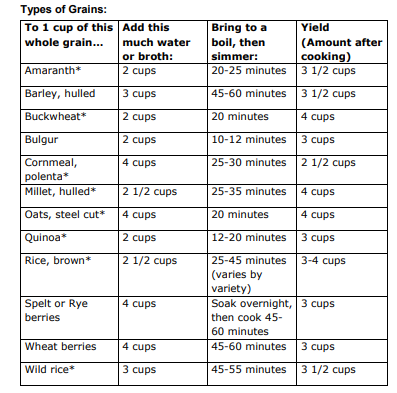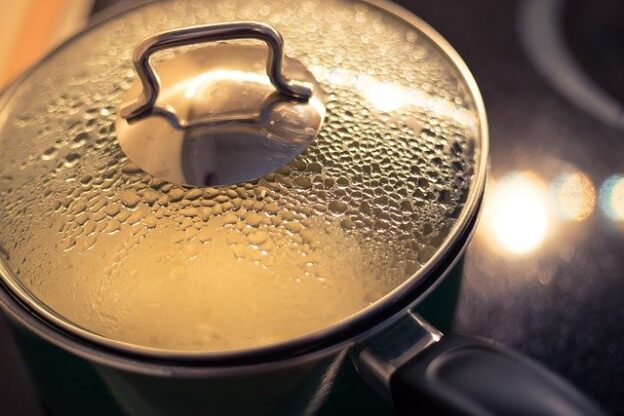Cooking Whole Grains
Compared to refined or “white” grains, whole grains are usually chewier and have a nuttier, fuller flavor. You may find this unfamiliar at first but stick with it until your palate adjusts and then reap the health benefits. The thing about whole grains besides getting used to the taste, it is not always easy to cook them it takes practice to master the skill of cooking them to perfect perfection!
Standard Method
- Put the dry, uncooked grain in a pan with the appropriate amount of cool water or broth.
- Place over high heat and bring it to a boil
- Reduce heat to low. Cover and simmer until the liquid is absorbed.
Pilaf Method
- Brown small bits of onion, mushroom, and garlic with a little oil in a saucepan.
- Add the dry grain and cook until fragrant, about 1-3 minutes.
- Add the appropriate amount of low-sodium broth.
- Place over high heat and bring it to a boil
- Reduce heat to low. Cover and simmer until the liquid is absorbed.
Time Varies when Cooking Grains
Grains can vary in the time they take to cook. When they are tender, they are done! If the grain is not as tender as you like when “time is up,” simply add more water and continue cooking. On the other hand,if everything seems fine before all the liquid is absorbed, simply drain the excess liquid.
Whole Grain Cooking Shortcuts
Let grains sit in the specified amount of water for a few hours. After soaking, add extra water if necessary, then cook (time will be shorter).
• Cook whole grains in big batches. They will keep for 3-5 days in your fridge and take just minutes to warm up. Add a little water or broth if needed. You can also use the leftovers for salads, grain bowls, or soup.
Fixing Sticky Bottoms
If the whole grains are sticking to the bottom of your pan, turn off the heat, add a very small amount of liquid, put a lid on the pan, and let it sit a few minutes. The grain will loosen, for easier serving and cleanup.

